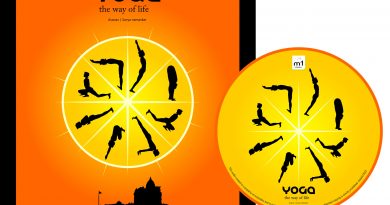Top 5 most distracted behaviors and how to change them
With the average attention span only lasting eight seconds, and the need to multitask to keep up with an on-the-go lifestyle, it’s no wonder so many of us are easily sidetracked during routine tasks. Mace, a globally recognized leader in personal safety and security, offers valuable tips to combat the five most distracted behaviors.
Running with headphones
Whether training for an upcoming marathon or jogging around the block, we often take the time to develop the perfect playlist to keep us going, but don’t consider the risks of tuning out the outside world. Before you press play, consider your personal safety: leave the headphones at home, especially at night. If you’re streaming music through your smartphone, make sure the volume is low enough to hear the traffic around you.
Texting while walking
Did you know that nearly 60 percent of pedestrians use a smartphone while crossing the street, according to the National Highway Traffic Administration? Combine that with the average five seconds a driver’s eyes are off the road while texting, a statistic from the U.S. Department of Transportation, and the results can be deadly.
Don’t walk and text. If you need to take a call, move to the side until your call is complete. Always be aware of your surroundings. A distracted pedestrian can be an easy target for potential criminals.
The National Crime Prevention Council suggests you switch directions or cross the street if you think someone is following you. If the person continues to lurk, move quickly toward an open store, restaurant or lighted house. Add an additional layer of protection by arming yourself with the BoobyTrapBra, a Just In Case bra designed to hold your pepper spray where you can easily reach it, empowering you to live an active life with peace of mind.
Walking your dog at dawn and dusk
Fido requires multiple daily walks to stay healthy. If your schedule only allows for exercising him in the early morning or late evening hours, you may find yourself walking in the dark when you’re overtired, which can delay reaction times when they’re most critical.
Keep dogs on short leashes for more control in heavy traffic. If you walk your dog in the dark, wear light-colored clothing with reflective strips so drivers can see you. Nite Beams are equipped with LED safety lights that provide high and instant visibility up to 1,400 feet or a 1/4 mile from every direction. Available for wrist, arm and leg bands for you, and collars and leashes for your dog, these bands will help to provide safety for everyone.
Navigating the parking lot
Whether working late or tackling weekly errands, busy parking lots and garages can be dangerous if you are distracted by an armful of bags, children or technology. Leave the balancing act for a secure location to ensure you safely get in your car and on the road.
Before making your way to your vehicle, be sure your keys are in hand. Pay attention to your surroundings and other vehicles entering and exiting the lot. Consider walking alongside the aisle instead of taking the stairwell, or ask a security guard to escort you to your car. To buckle a child into a safety seat, get into the backseat with the child and lock the doors rather than doing so from outside the vehicle.
Zoning out on public transportation
One of the perks of public transportation is the ability to use your travel time to multitask, like getting a jump start on your day by checking work emails. While you may enjoy not paying attention to the road, don’t let productivity goals get in the way of your personal safety.
Ride in the first car or closest to the operator (insider tip: the train conductor is usually in the second car). If you are traveling at night, do your best to avoid dark or isolated stops. Remain aware of your surroundings as you exit, with keys in hand when you depart from the stop or station. For added protection, include the compact and easy-to-use Mace Brand KeyGard on your key ring.
Whether walking, running, driving or riding, incorporate these tips into your everyday habits to help keep yourself safe and secure throughout the day.
(BPT)











